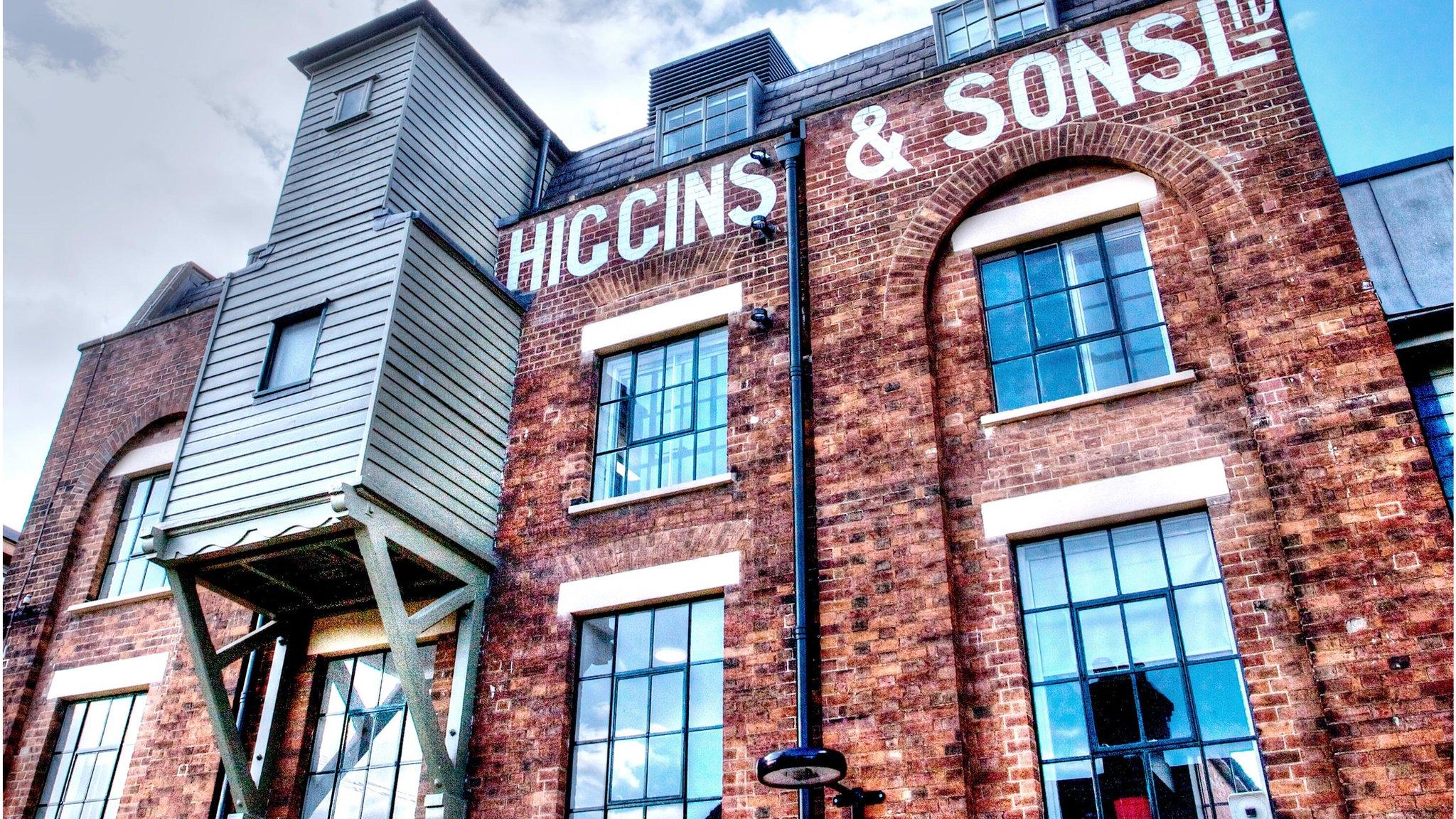Edward Bawden: Bedford 'the place to see' his work
- Published
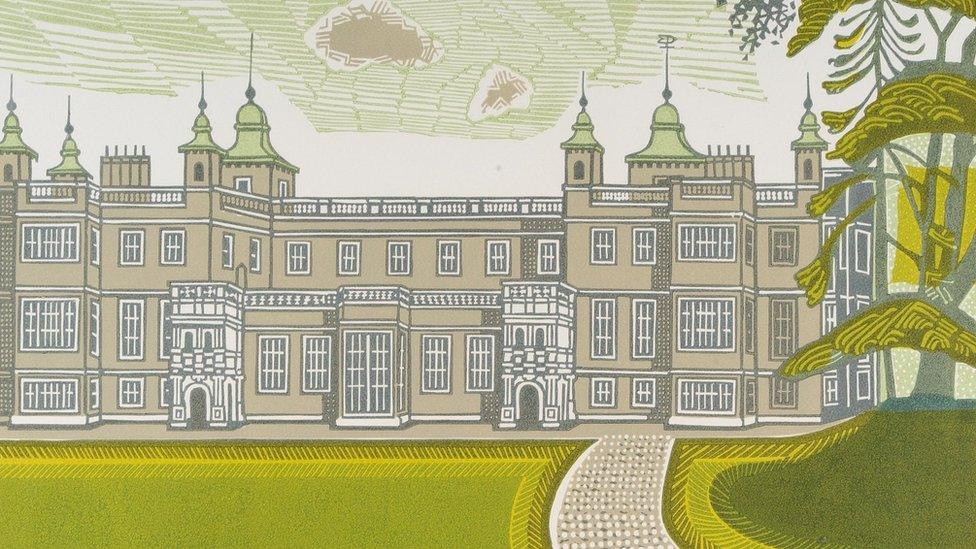
Edward Bawden lived close to Audley End House, at Saffron Walden in Essex , and it was the inspiration for this piece from about 1975
A museum that was left work by the artist Edward Bawden has become "the place to see" his work.
Victoria Partridge, from The Higgins Bedford, said being the custodian of about 3,000 of his pieces had helped bring a "new audience" to the town.
The latest exhibition showcasing his work has opened at the gallery and museum in Bedford town centre.
Edward Bawden: Architectural Elements, features work that has never been on public display.
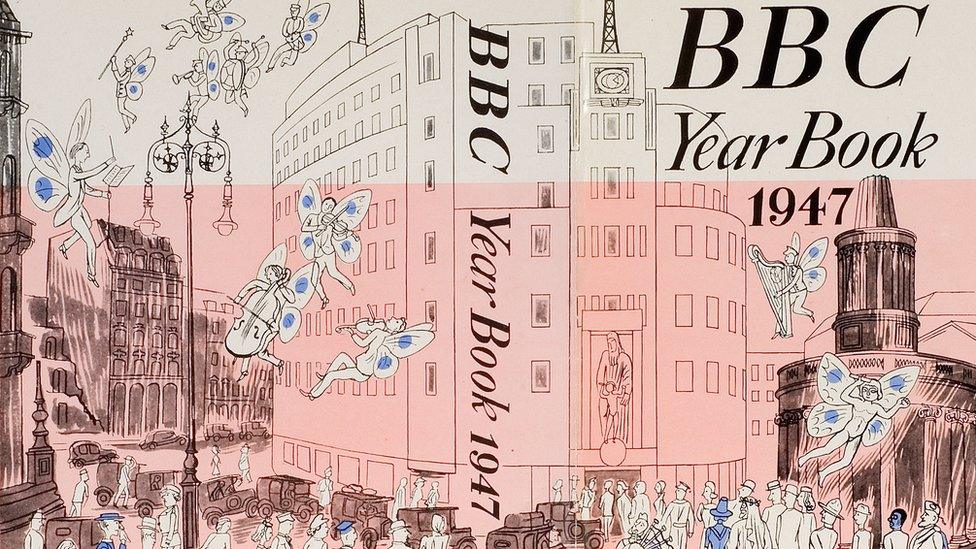
The artwork was left to the Trustees of the Cecil Higgins Art Gallery, now known as The Higgins, Bedford, which reopened in 2013 after a two-year refurbishment
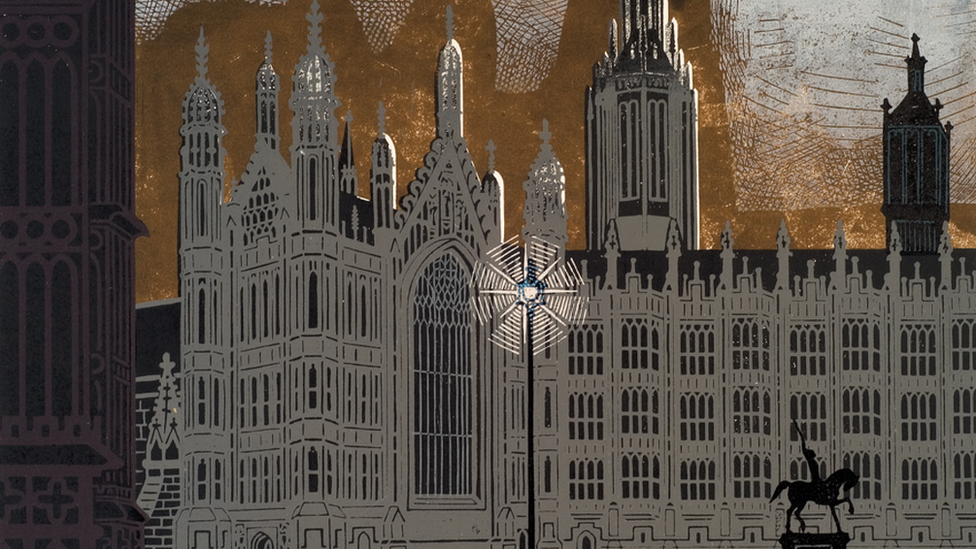
His interpretation of The Palace of Westminster features in the exhibition
Ms Partridge, of the Higgins Bedford, said "in the 1920s and 30s you could not move" without seeing Bawden's work which included watercolours, print murals, illustrations for advertisements, crockery and even a garden bench.
"In his day he was very popular, his water colours and prints sold well and his commercial advertising work was unique, humorous and clever," she said.
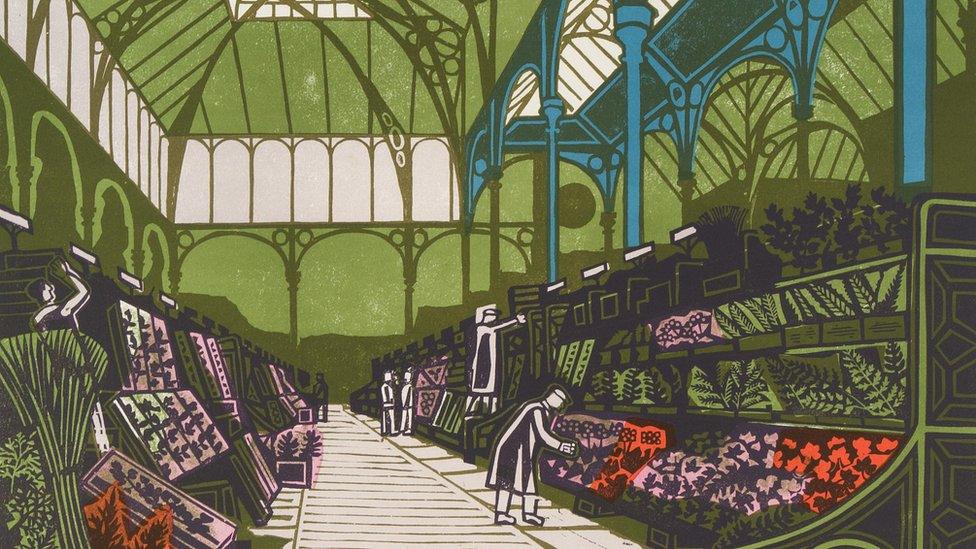
He painted The Floral Hall in Covent Garden in 1967
Ms Partridge said the "Bawden effect" really kicked after some of his work was loaned to south London's Dulwich Picture Gallery, external in 2018.
"It meant a whole new audience found that we had his archive here," she said.
"Bawden fans know to come to us, so we get a lot of visiting art students. Bedford has become the place to see Bawden."
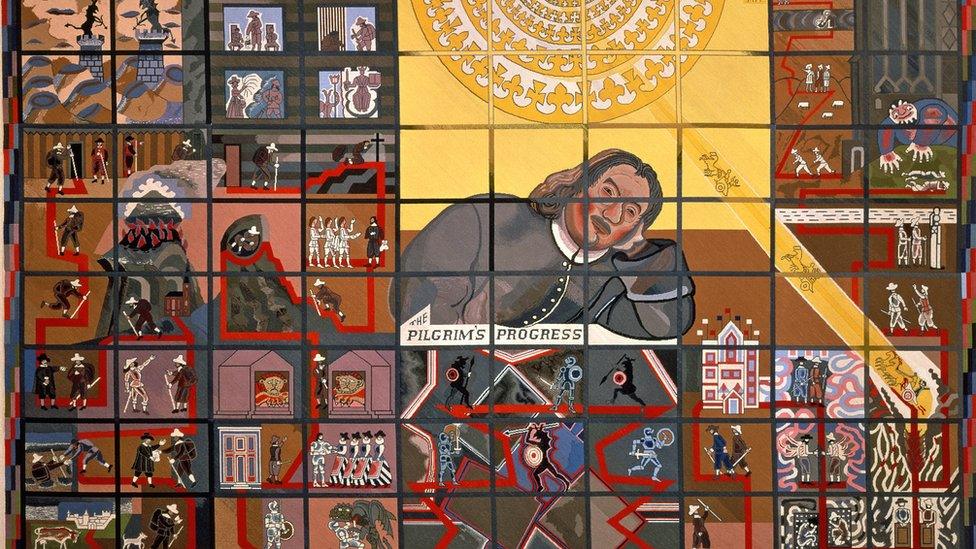
Bawden was commissioned by the Bedford museum to create a tapestry of John Bunyan, the author of The Pilgrim's Progress and one of the town's most-famous sons
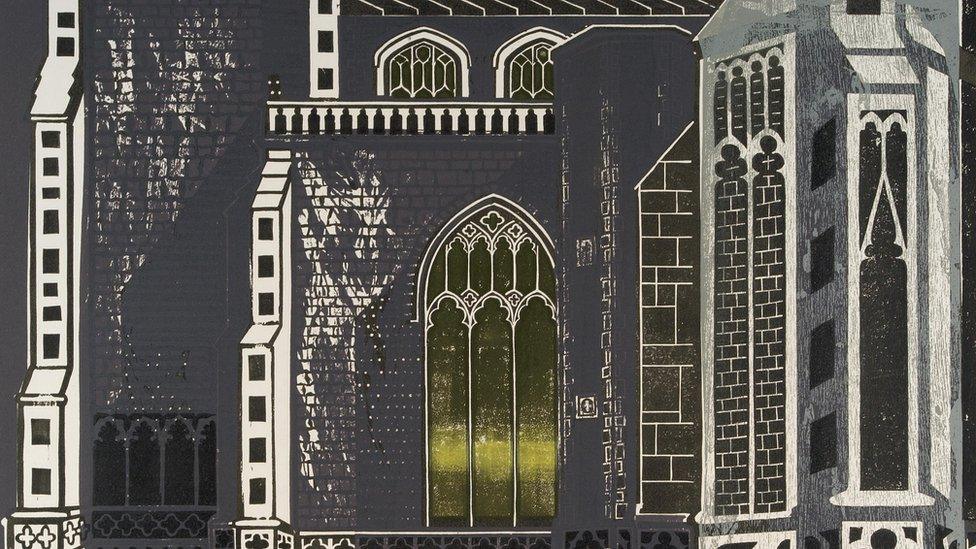
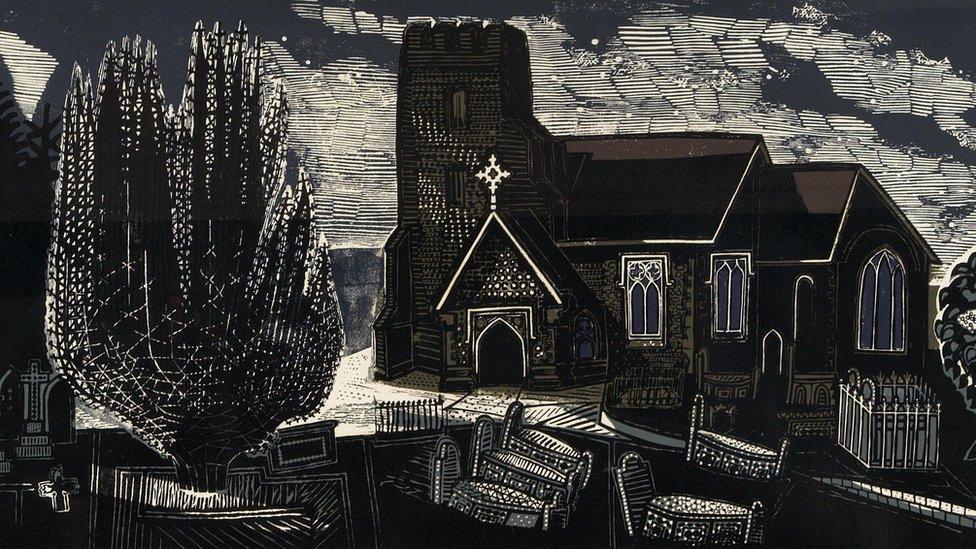
Bawden's take on Lindsell church, near Great Dunmow in Essex
Bawden (1903-89) lived in Essex at Great Bardfield and Saffron Walden and was one of 30 people appointed as an Official War Artist by the War Artists' Advisory Committee during World War Two.
His work came to end up at The Higgins after he struck up a friendship with its then-head, Halina Graham, who was the curator when it was called the Cecil Higgins Art Gallery.
"He believed leaving it to somewhere where his work would be appreciated - next to the works of Turner and Picasso," said Ms Partridge.
"It would be in good company and not just put away in a larger museum for archive purposes."
The exhibition, featuring prints, advertising campaigns, private commissions, personal Christmas cards and wallpaper designs, runs until to 24 January 2021.
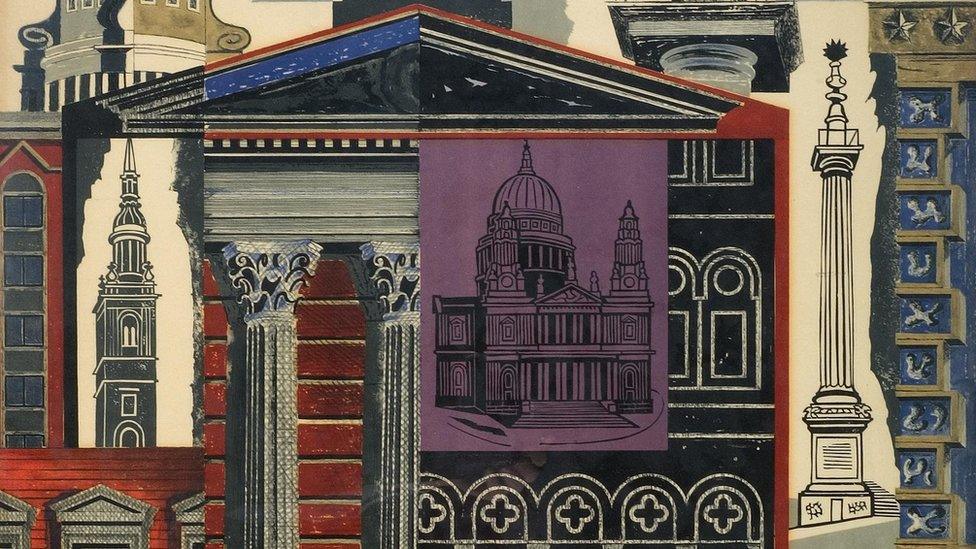
His work included a poster for London Transport City in 1952
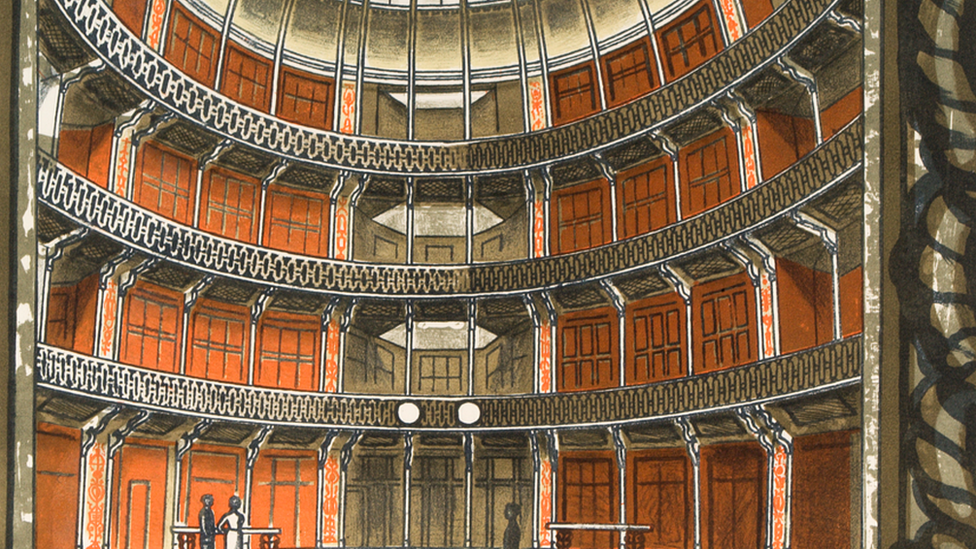
His work shows the Coal Exchange in London which was demolished in November 1962 to allow a road to be widened
.
- Published30 November 2019
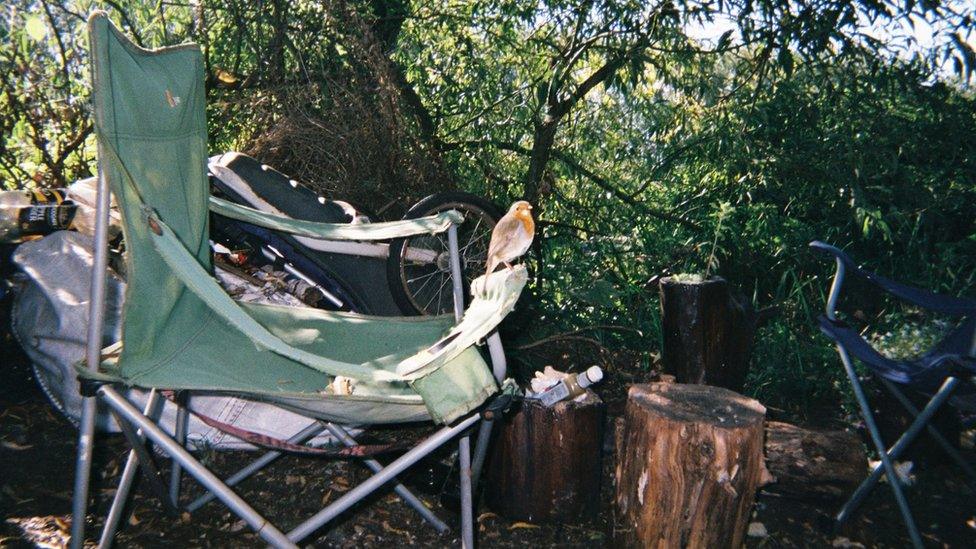
- Published10 March 2018

- Published24 February 2018
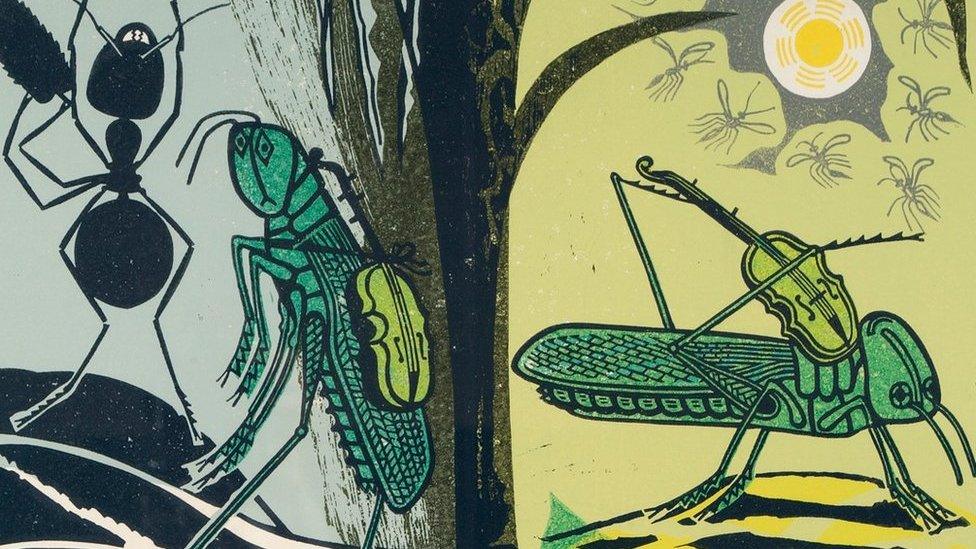
- Published21 June 2013
